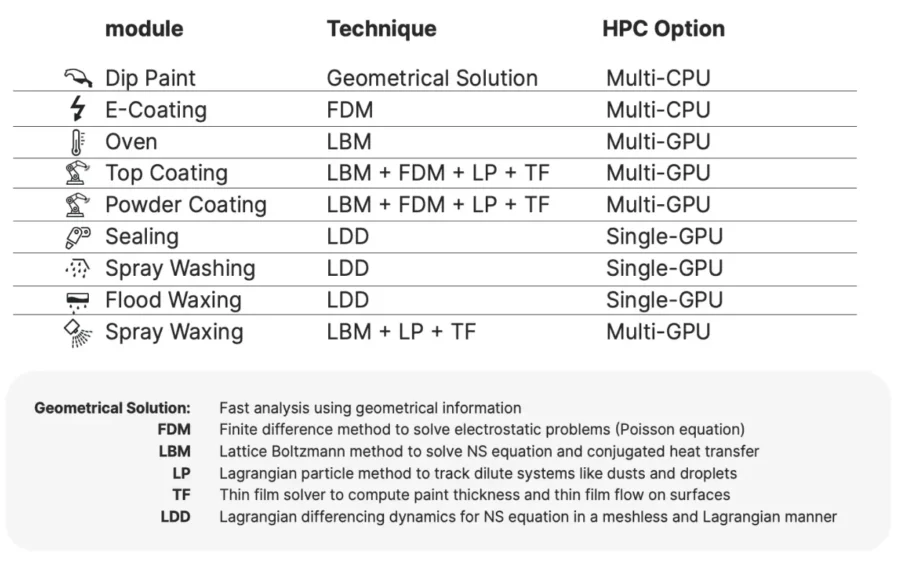Hybrid solvers: Optimized Simulations of Complex Paint Shop processes

In the automotive world, paint shop processes like top coating, ecoating, and sealing come with a unique set of challenges. These tasks require accurate simulations that involve complex physics. For many companies, especially smaller ones, using computational fluid dynamics (CFD) tools to simulate these processes can be challenging due to their complexity.
Why hybridization matters
Automotive paint shop processes aren’t straightforward. Replicating it accurately requires to develop a model, understand the environment, assume the movement and understand the controlling forces and interdependent elements. The efficiency of a process often depends on various factors like – airflow, droplet motion, and the behavior of paint settling on surfaces. Using a single solver to model such a process accurately is nearly impossible. That’s why hybridization, the coupling of multiple solvers, is so important. Take top coating as an example:
- Lattice Boltzmann Method (LBM) models the airflow from the nozzle.
- Finite Difference Method (FDM) captures the electrostatic forces on the paint droplets.
- Lagrangian Particle Method tracks how the droplets move through the air.
- Thin Film Solver shows how the paint spreads and flows once it lands on the surface.

Validation with customers is key
By blending different methods, we can deliver a simplified CFD experience for all users with greater accuracy. Similarly, other Paint Shop modules, were individually built for each paint shop processes – by our team of experts, improved and validated with the help of our valued customers. During the development of E-coating, for instance, we initially tried a Boundary Element Method, which was highly sensitive to the quality of surface mesh. The complexity of the geometry made getting meaningful results difficult. Through iterative testing, validation with customer input, and a deeper investigation of factors like boundary conditions, we refined the process and moved to more robust methods like FDM.
Involving our customers in the development process was vital for us. Real-world test data provided key feedback, and working closely with users helped us fine-tune not only the physics but also the user interface, guaranteeing both accuracy and ease of use.
Computational efficiency
Running such complex simulations utilizing multiple solvers can be computationally very demanding. It is impossible without employing multi-GPU setups to parallelize tasks and reduce computation times. Only the very effective usage of multiple GPUs allows for efficient processing of large simulations, such as those for top coating, in significantly less time compared to traditional methods.
Making CFD for everyone
Thanks to the hard work involving countless trials and errors, validations and optimizations – alsim Paint Shop is now being used by non-CFD teams all around the world with terrific results. Traditionally, running CFD simulations requires a deep understanding of fluid mechanics and numerical methods, and several months of development. With the dedicated use of hybrid solvers, we’ve reduced this complexity to literally couple of clicks.
Ready when you are
The ultimate goal of alsim Paint Shop is to make CFD autonomous. It automatically handles the complex physics and solver interactions in the background, giving you the freedom to focus on improving your paint processes. Similar to Top Coating, hybrid solvers are being used for our other Paint Shop modules.
If you’re looking to optimize your paint shop’s processes with smarter, more efficient simulations, alsim Paint Shop might be the solution you’ve been waiting for.